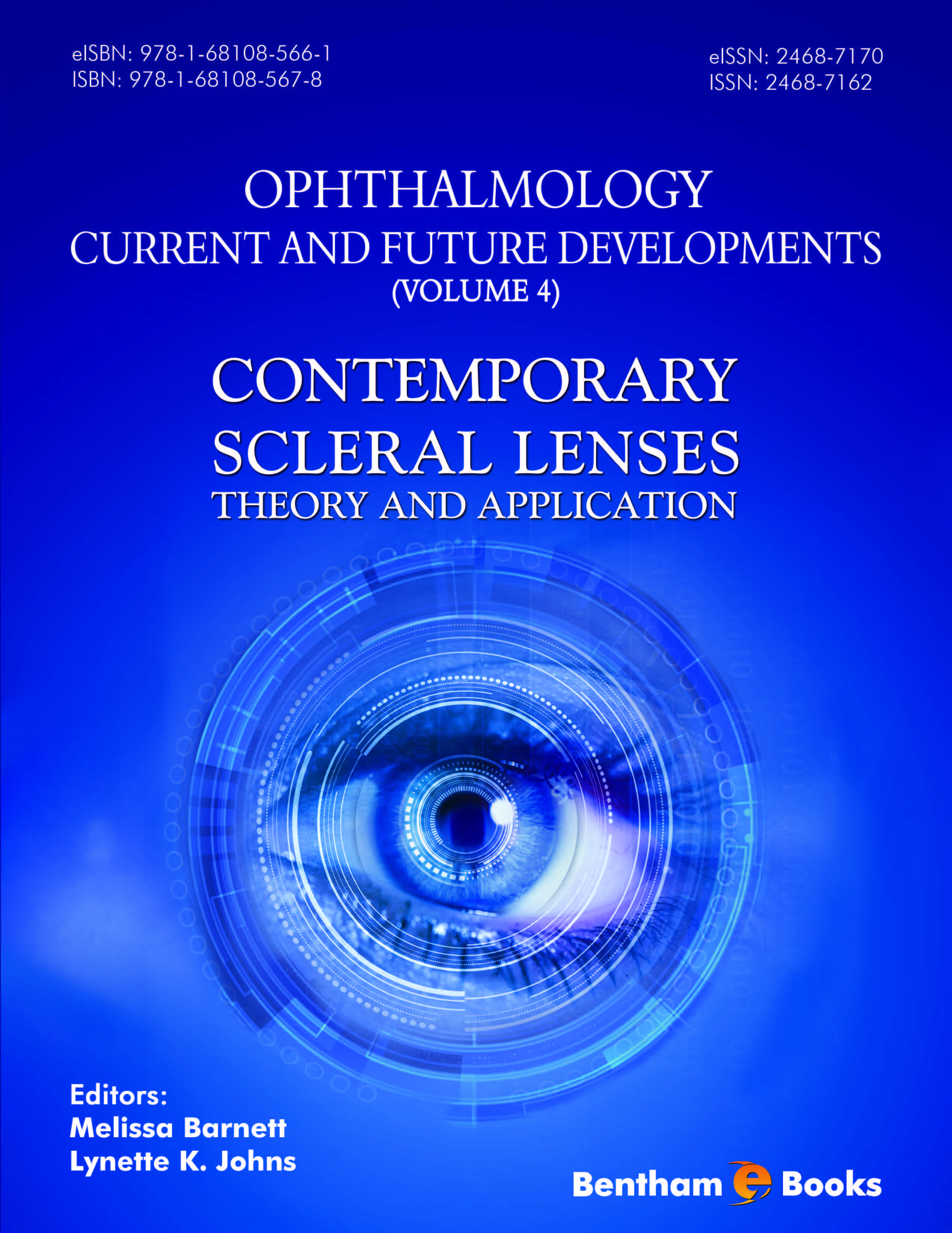Reviews
Review 1
After reading through this large volume, I find that Contemporary Scleral Lenses (abbreviated CSL below) is a very comprehensive view of modern scleral contact lens practice, heavily weighted towards the practical clinical care of patients - but with much reference to both the science underpinning modern contact lens practice in general as well as scleral lenses, and the history of this particular sub-branch of practice.
In sum, this text, organized into 16 chapters, with reasonable references, spans the area thoroughly.
I believe that both the novice wishing to begin scleral lens practice, and the seasoned practitioner wishing to gain advanced knowledge and perspective, will appreciate this book.
I do, however, suggest that even the novice reader should have some previous background in contact lens science and care, both of rigid and soft lenses, with some familiarity with the terms such as base curve and toricity. Perhaps there should be a suggestion of some of the more general CL texts which are available and which should be perused prior to undertaking CSL.
I note clean clear writing throughout, a compliment to the editors I am sure, but also, unfortunately, an modest amount of un-necessary overlap here and there; this latter is often a problem with many chapters contributed by various authors in the same area of knowledge.
In sum, I enjoyed the reading of this text and gained more than a few insights and clinical pearls. It is up to date, comprehensive, and clear, and a worthwhile addition to the library of any clinician or scientist working or teaching in the area of scleral contact lenses.
Barry A. Weissman, OD, PhD, FAAO (Dip CCLRS section)
Professor of Optometry, Southern California College of Optometry at Marshall B Ketchum University, Fullerton CA USA
Emeritus Professor of Ophthalmology, Stein Eye Institute, David Geffen School of Medicine at UCLA, Los Angeles CA, USA
Review 3
Contemporary Scleral Lenses: Theory and Application
is a very comprehensive clinical ‘how to’ resource for everyone interested in fitting scleral lenses. The authors are prolific writers, lecturers, and clinicians. Dr. Melissa Barnett, Principal Optometrist at the University of California, Davis Eye Center, is an exceptional scleral lens fitter with every conceivable lens design as well as a noted author. Dr. Lynette Johns, Adjunct Assistant Professor at the New England College of Optometry and formerly associated with the Boston Foundation for Sight, has a wealth of experience with large scleral designs and may quite be the most in-demand lecturer on scleral lenses. Both authors are outstanding instructors as it pertains to ‘hands-on’ scleral workshops and have trained a significant number of eye care practitioners (ECP).
This 477-page text includes contributions from over 30 of the foremost experts in scleral lens fitting in the world. The text includes over 300 figures, helping ECPs to design, evaluate, and problem-solve scleral lens designs. It is available in several formats (i.e., personal ebook, printed copy, or combination pdf and printed copy), with the ebook being the most economical and likely most popular.
This text will answer all of your scleral lens questions including: 1) What patients should I fit into scleral lenses? 2) What specific lens design should I select? 3) How much clearance is optimum? 4) When should I use toric haptics? 5) How can I optimally use topography and optical coherence tomography (OCT) with scleral lens patients? 6) How can I manage problems such as a) the tight-fitting lens, and b) mid-day fogging? and 7) Where can I go for help?
Among the chapters in the text are those that pertain to scleral terminology, lens design and scleral lens anatomy, medical applications (an outstanding chapter from Dr. Muriel Schornack), sclerals for healthy eyes (i.e., presbyopia and astigmatism), patient recruitment, instrumentation (i.e., topography, OCT, slit lamp, etc.), lens selection, lens evaluation, how to properly document findings, lens care and patient education, and management of complications. My sense is that the two most popular chapters will be the one pertaining to “Scleral Lens Complications and Problem-Solving” and the one entitled: “Scleral Lens Challenges”. The problem-solving chapter includes the diagnosis and management of such conditions as edema, neovascularization, limbal bearing, staining, hyperemia, conjunctival hypertrophy, conjunctival prolapse, mid-day fogging, tear reservoir debris, poor surface wettability, reduced vision, poor comfort, and handling difficulties. The challenges chapter includes contributions from 17 experts on a wide range of problems and challenging patients who benefit from scleral lenses. This includes several of the aforementioned problems as well as conjunctival blebs, glaucoma draining device, symblepharon, impression molded sclerals, infiltrates, graft rejection, pediatric applications, neurotrophic corneas, and handling challenges.
I also loved the least applied chapter in the text pertaining to the history of scleral lenses as written by ‘the expert’ on contact lens history, the late Tim Bowden. It was fascinating to learn about the origins of scleral lenses which for centuries paralleled the origins of contact lens history in general.
Edward S. Bennett OD, MSEd, FAAO, FSLS
College of Optometry
University of Missouri-St. Louis
One University Boulevard
St. Louis, MO 63121

